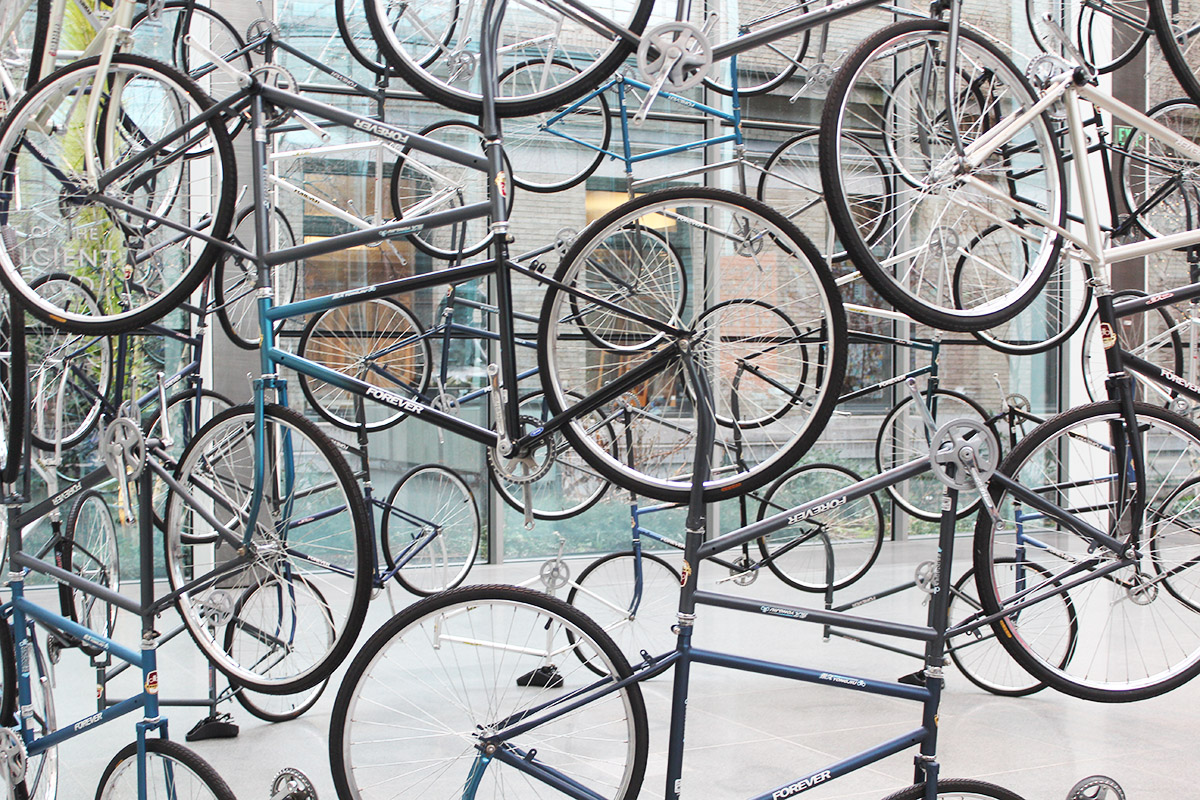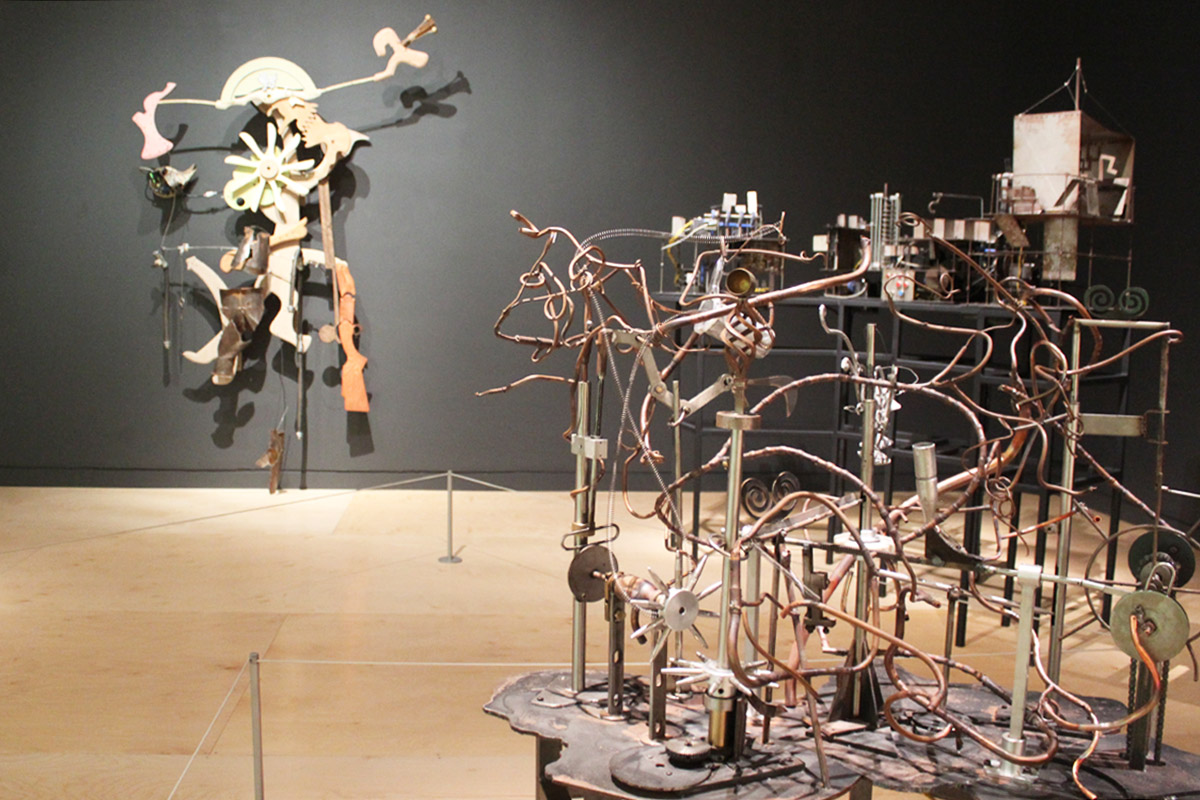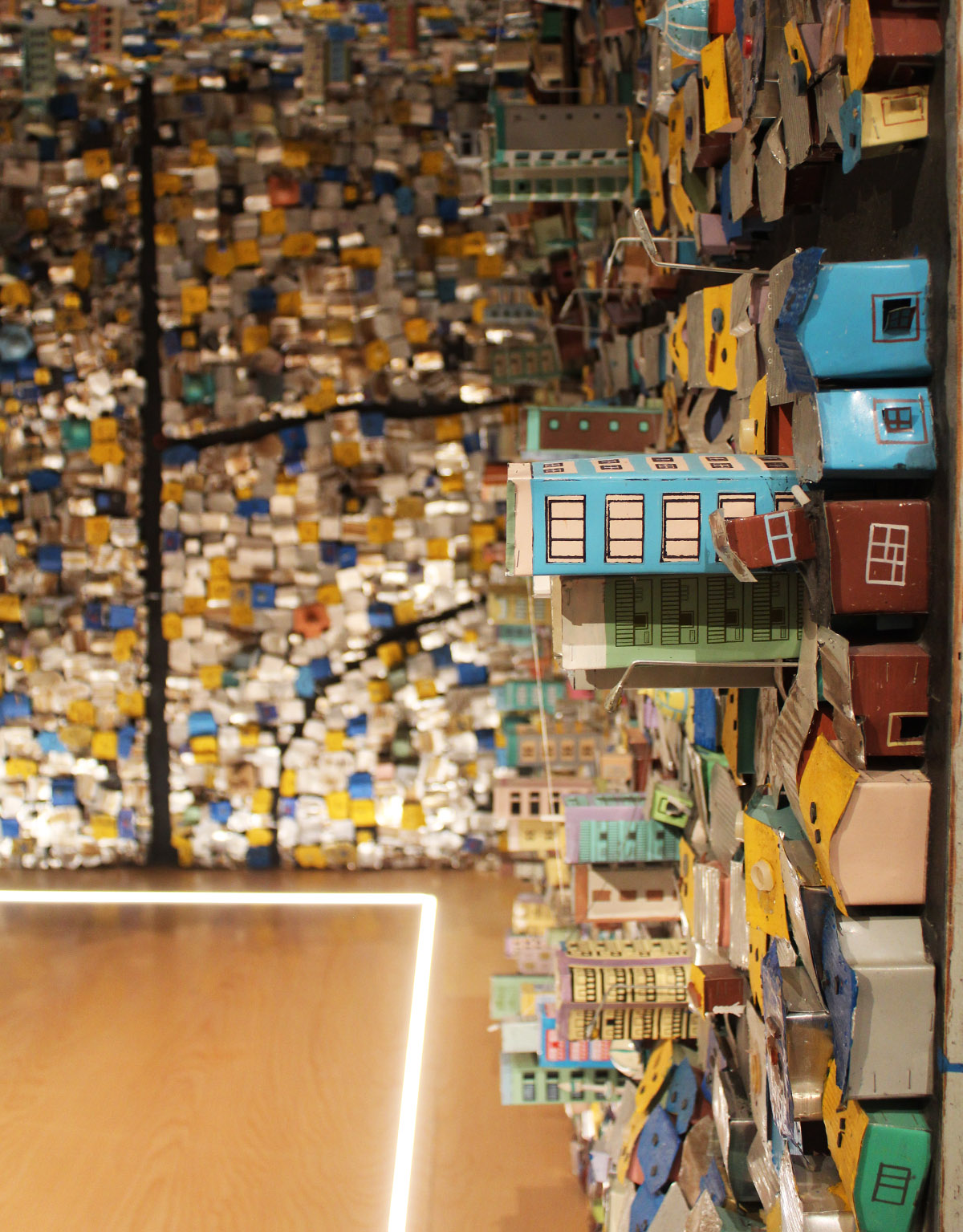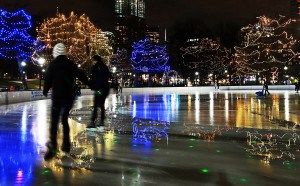Megacities Asia Opens This Weekend at the MFA

‘Forever,’ Ai Weiwei. / Photo by Cassidy Hopkins
Bangs, crashes, and clanks rattle throughout the MFA’s Ann and Graham Gund Gallery. It would usually be a commotion for any other museum, but the MFA’s current exhibit invites the racket.
The noises are coming from the metal-based sculpture “Drifting Producers” by artist collective flyingCity. Led by Jeon Yongseok of Seoul, the group produced a variety of kinetic sculptures, four of which will be on view at the MFA’s new exhibition Megacities Asia, opening this Sunday, April 3.
The flyingCity artists spent six years living in one of Seoul’s central neighborhoods. Residing in an area that housed many small-scale machine shops, they decided to produce a series that comments on the city’s rapid redevelopment and the improbable survival of small-scale industries.
The result is a lively bustling cacophony that turns the Gund Gallery into a city-like space itself.

‘Drifting Producers,’ flyingCity/Jeon Yongseok. / Photo by Cassidy Hopkins
Showcasing eleven artists from five different megacities—Seoul, Shanghai, Beijing, Delhi, and Mumbai—Megacities Asia is the museum’s largest contemporary exhibition ever. The exhibit expands beyond the museum’s walls, with sculptures planted in the MFA’s front lawn and presented in Marketplace Center near Faneuil Hall.
Defined as a city with a population of ten million or more, “megacities” are on the rise. With Asia boasting the most megacities across any other continent, it seems only fitting that the MFA is highlighting the rapid urbanization of the region.
China, India, and South Korea have seen unprecedented growth in the past 50 years, and contribute their own metropoles to a list of about 30 megacities found in Asia alone.
The works featured in Megacities Asia comment on what is happening in those cities and present how the artists are responding. In their pieces, the artists used common materials, found objects, and mundane items to produce large-scale sculptures and installations that examine urbanization. The MFA even invites visitors to walk under, through, around, or inside select sculptures in order to get a closer look at the statements being made.

‘Venu,’ Asim Waqif. / Photo by Cassidy Hopkins
One example of this is Delhi-based artist Asim Waqif’s “Venu”. The work, made of bamboo and cotton rope, resembles scaffolding. With vibration sensors and humming motors, the piece comes alive from inside and out. It’s Waqif’s response to Delhi’s massive and ongoing construction.
Shown first at the Hong Kong Art Fair in 2011, the piece has been on display in only a few other cities around the world. Now in Boston, Waqif hopes the piece will encourage viewers to be less passive about art.
“I find that the scaffolding looks much cooler than the building that comes up,” says Waqif.

‘8 x 12,’ Hema Upadhyay. / Photo by Cassidy Hopkins
With booming infrastructure comes mass migration. Reflecting on the migrant experience are Hema Upadhyay’s works “Build me a nest so I can rest” and “8′ x 12′”.
No stranger to the migrant experience, Upadhyay experienced it firsthand when she relocated with her family to Mumbai at the start of her career.
“8’ x 12’ “comments on what it is like for families living in Mumbai’s largest slum, Dharavi. The piece is built from the same materials used to construct the slum dwellings, including aluminum sheets and car parts. The inside of the work, which visitors can walk through and observe up close, is made of protruding mini-houses, recreating a bird’s eye-view of Dharavi.

‘Build me a nest so I can rest,’ Hema Upadhyay. / Photo by Cassidy Hopkins
Meanwhile, “Build me a nest so I can rest” consists of 300 terra-cotta birds, often sold in India as children’s toys or trinkets. The handmade birds were either gathered from craftsmen or created by Upadhyay herself. In the beaks of the birds are quotes that Upadhyay collected from books, the news, and even migrants, about what it’s like to relocate and the hopes the people have.
Visitors will likely be saddened to learn that Upadhyay was murdered in December. Her body was discovered in a drain in a Mumbai suburb.
“Hema’s captivating work reflected not only her unique creative vision, but also her deeply felt compassion for the vulnerable communities around her,” said “Megacities” co-curator Al Miner. “I’ll miss her generous spirit, intelligence, warmth, and energy.”

Choi Jeong Hwa sits in his piece ‘Chaosmos Mandala.’ / Photo by Cassidy Hopkins
Another artist prominently featured in the exhibit is Choi Jeong Hwa. His first piece, an inflatable sculpture titled “Breathing Flower”, was installed last week in front of the MFA’s main entrance. “Chaosmos Mandala” (pictured) in the Art of Asia gallery invites visitors to sit in a chair in order to become part of the mirrored landscape. The piece comments on the chaos and beauty of the world. Two other installations by Choi include “Alchemy”, a series of colorful light columns presented at the top of the museum’s Hemicycle Staircase, and “Fruit Tree”, which will be on display in Marketplace Center near Faneuil Hall.

‘Snake Ceiling,’ Ai Weiwei. / Photo by Cassidy Hopkins
“Snake Ceiling” by Ai Weiwei is one of two pieces featured by the Beijing-based political artist. While “Forever” (pictured at top) is composed of bicycles and reflects on our rapidly changing society, “Snake Ceiling” is connected by about 350 backpacks and serves as Ai’s memorial of the 5,000-plus children who died due to a large earthquake in China’s Sichuan province in 2008.
In addition to two pieces at the MFA. Ai Weiwei fans can also see a third work by the artist in Boston this year. “Circle of Animals/Zodiac Heads” will be on view at the Rose Kennedy Greenway late April through late October.
Megacities Asia at the Museum of Fine Arts opens April 3-July 17. For more info, visit mfa.org.


